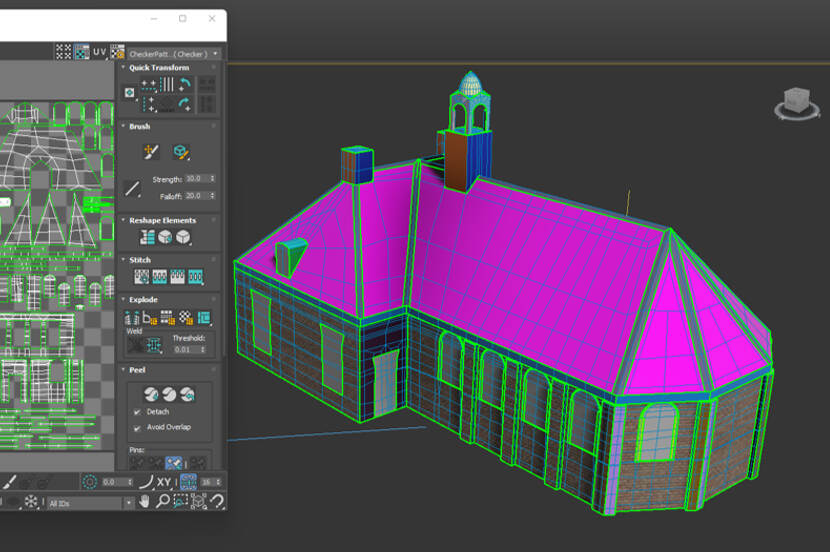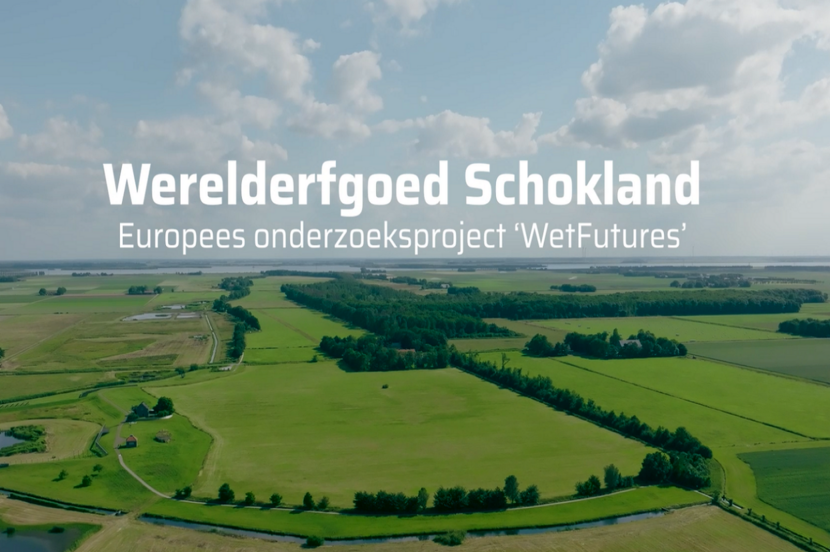JPICH project Wetfutures presents Schokland in mixed reality
JPICH - the Joint Programming Initiative on Cultural Heritage - is a network of countries that fund research, including the Netherlands. In 2017, JPICH has launched a call for research proposals on the theme of ‘Heritage in changing environments’. One of the projects funded through this call is Wetfutures, a collaboration between scientists from the Netherlands, the United Kingdom and Ireland. On 22 September, the project group Wetfutures presented the result of their project: a Mixed Reality (MR) app for the UNESCO World Heritage Site of Schokland.
Mixed reality-app
The Wetfutures project has embraced an innovative way to bring science to the general public by making use of immersive technologies. With this app, Wetfutures wants to help ancient world heritage com to live and to provide users with an interactive view that enables you to experience landscapes of the past. Schokland was a former island in the Zuiderzee and is considered a national symbol for the age-old Dutch battle against the water. The app will be available in the WANDER lab for everyone who wants to experience it.
[Text continues below the image]

Taking users back to different phases in the history of the island, the app is a great tool for visualising scientific data and raising awareness and enthusiasm on landscape history. It offers a tangible, engaging reconstruction of our past, which helps to understand our present and potentially to plan for the future.
Schokland: Werelderfgoed in Mixed Reality
Roy van Beek is Assistant Professor in Landscape Archaeology at Wageningen University, and project leader of the European Wetfutures project that centres on cultural heritage in dynamic wetland environments in the Netherlands, United Kingdom and Ireland. One of the pilot areas is the former island of Schokland, which has been inhabited for thousands of years and underwent major landscape changes through time. In 1942 the Zuiderzee was reclaimed, and now Schokland lies in a ‘polder’ landscape which only offers a faint glimpse of the past.
I hope this app will bring Schokland's past to life for the general public, and that the historical GIS system will help us to manage this special landscape
, says van Beek.
These major long-term changes are reflected in a historical GIS system (HGIS), developed by post-doc Rowin van Lanen and researcher spatial analysis Menne Kosian (Cultural Heritage Agency of the Netherlands). This HGIS forms the fundament underneath the MR app that was developed by the Wageningen University WANDER lab, in cooperation with Museum Schokland.
[Text continues below the image]

Digital transition enables virtual and real worlds to merge, which in turn disrupts how people interact with information. Immersive visualisation techniques can serve as new mediums to facilitate the transfer of knowledge in a comprehensive, productive and engaging way. In this case, the mixed reality capabilities allow the audience to experience the 3D data-driven environment of historical Schokland without the need of being experts in the area.
We are literally bringing knowledge to society. What's more, we can finally put this technology to great use
, according to Ioana Mereuta.
Partners
Several parties contributed to this video. Dr Roy van Beek (WUR) is one of the project leaders for NWO and the RCE-funded European research project Wetfutures, which is part of JPI Cultural Heritage. Ioana Mereuta of Wanderlab (WUR) is responsible for the development of the MR app. Marcella Marinelli is coordinator for World Heritage Schokland at the municipality of Noordoostpolder. The video and app will also be available to the general public at Museum Schokland.